
In the history of Old Russian iconography Simon Ushakov is associated with the last period of art of the Moscow Russia. Both his creativity and personality are typical for the epoch of basic changes that took place in the second half of the 17th century. Collapse of the medieval outlook lead to serious changes in understanding and interpretation of icon-painting images.

Simon (Pimen) Fyodorovich Ushakov was most probably born into the family of tradespeople, and, apparently, quite early received thorough training for his trade, since at the age of 22 he was already employed as a full-fledged master of the Silver Chamber at the Armoury Department. His direct duties there were to make drawings for various items of church utensils and palace utilities, mainly for gold, silver and enameled ones, paint church banners, design patterns for needlework, draw maps, plans, etc. Apart from assiduously performing these duties, Simon Ushakov painted icons for the court yard, for churches and private customers, and pretty soon gained fame as the best Moscow icon painter.
After Ushakov’s transfer from service in the Silver Chamber to the Armoury in 1664 the area of his activities expanded and accordingly his glory grew even more: he came to head other tsar’s artists and even generated a school of icon painters. He was in favor of Tsar Alexey Mikhailovich and his successors to the throne, executed all their orders in the art field and was in clover till the end of his life.
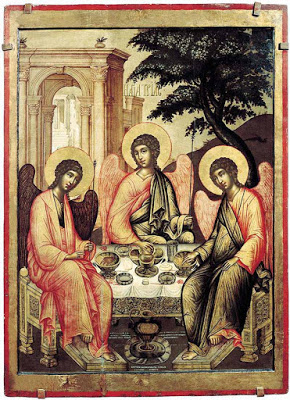
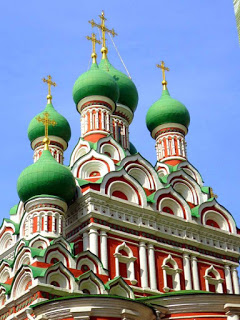
Quite a number of icons painted by Simon Ushakov have come down to us, but unfortunately most of them have been deformed by later over-paintings and restorations. Ushakov’s works testify that he was a person very well developed for his epoch, and a gifted artist who had mastery in all the art techniques of that time. As opposed to the prescribed rule of painting icons according to ancient samples, Ushakov wasn’t indifferent to the western art, the tendencies of which were already widely spread in the 17th century in Russia. Standing firmly on the ground of authentic Russian- Byzantine style of icon-painting he painted both following the old manner and the new style, invented new compositions, looked closely at the western samples and nature, and aspired to impart distinctness and movement to the depicted figures.
The area of Ushakov’s activities included preparing drawings for engravers. Dmitry Rovinsky in his “Detailed dictionary of Russian engravers” showed two etchings created by Simon Ushakov.
Of all Ushakov’s iconographic scenes the most famous are his icons of the Savior, the Trinity, and the series based on Scriptural history in the Moscow St. Trinity Church in Nikitniki.
Simon Ushakov was one of the first Russian artists who starting introducing elements of realistic perspective into iconography, though keeping up the canons of icon-painting. However, as M. B. Alpatov mentions “in his works he allowed fewer innovations than in his statements about art”.

Simon Ushakov made a strong impact on Russian church art (among his students and followers there were George Zinovev, Ivan Maksimov, Tihon Filatev, Cyril Ulanov and other icon-painting masters), having anticipated its new course during the epoch of Peter the First’s reforms.

In addition to a multitude of frescoes for the churches of the Kremlin and palace buildings, icons for the imperial family, and portraits of them, Ushakov painted icons for his local church, the aforementioned Church of the Trinity in Nikitniki, throughout his life. He also worked at times for other churches, monasteries, and private patrons. In the spirit of the reforms of Patriarch Nikon, who strove to bring the Russian church in line with the traditions of Greek Orthodoxy, Ushakov in his icons chose to reflect the countenances of Greek icons, many of which had been brought from the Orthodox east, and of old Russian icons that had been painted in the Greek style. Ushakov believed, like many other icon painters, that the saints in icons should look revived and illuminated, and indeed, critics agree that he did manage to fill his icons with feeling and light. But he did this while uniting traditional Byzantine formulas (flattened figures in hieratic poses) with the chiaroscuro and perspective of Western painting, as was also done in the Greco-Italian iconography that Ushakov favoured. This style, however, ultimately worked counter to his intentions. By inspiring his icons with life and strength, Ushakov was unable to withstand the secularization of his iconography.


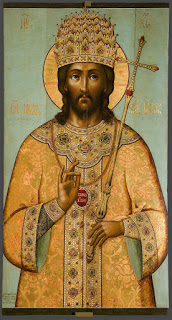






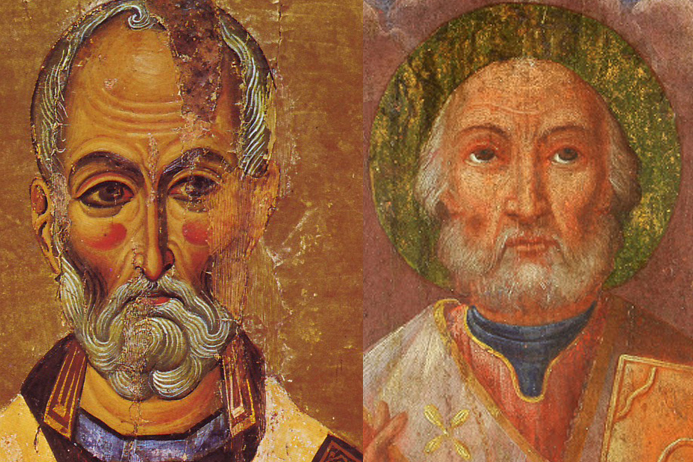
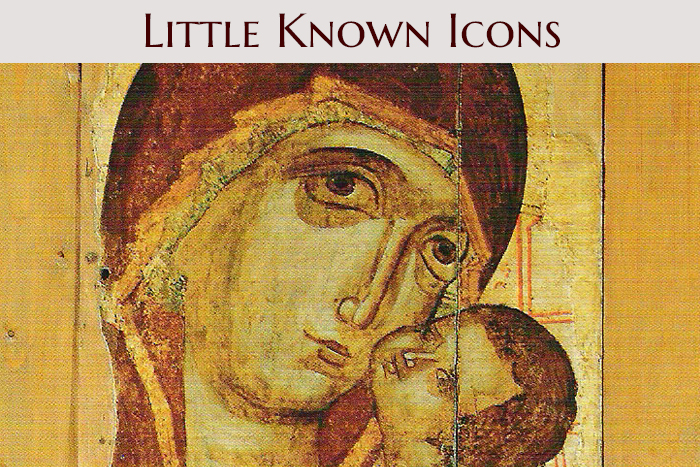
Is the man with no halo, who seems to have a small sized loaf of bread in his hand, on "The Mystical Supper" Mr. Ushakov painted in 1685 Judas?
It seems it's him. He's the only one who's supposed to have no halo on this icon.